Best Places To Travel In Iran
1.Tehran (Iran)
Tehran(Iran)
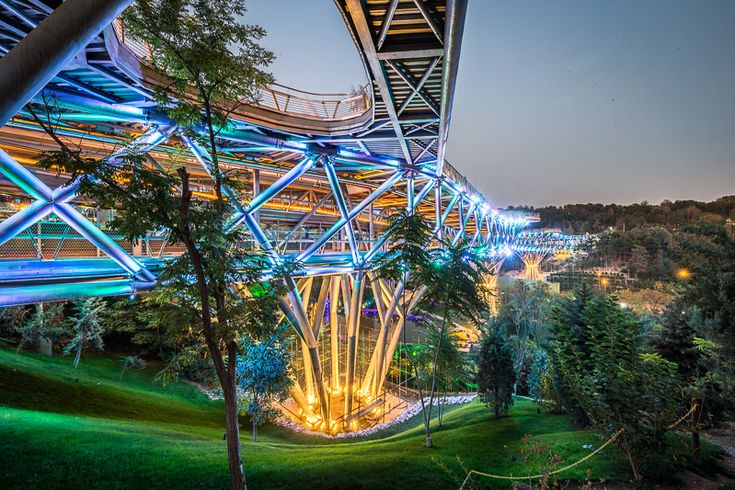
Iran, officially known as the Islamic Republic of Iran, is a country located in the Middle East, bordered by countries such as Iraq, Turkey, Afghanistan, and Pakistan, and has coastlines along the Caspian Sea and the Persian Gulf. Known for its rich cultural heritage, Iran is home to one of the world’s oldest civilizations, with a history that spans thousands of years, including the powerful Persian Empire.
The country boasts a diverse landscape ranging from vast deserts to lush forests, rugged mountains, and beautiful coastlines. Its cities are filled with stunning architecture, including ancient palaces, mosques, and bazaars. Tehran, the capital, is a bustling metropolis, while cities like Isfahan, Shiraz, and Yazd are famous for their historical and cultural significance.
Iran is also known for its contributions to art, poetry, philosophy, science, and technology. Despite its complex political landscape, it remains a country with deep traditions, warm hospitality, and a strong sense of national pride.
Tehran, the capital city of Iran, is a vibrant and bustling metropolis nestled at the foot of the Alborz Mountains. As the political, cultural, and economic heart of the country, Tehran is a dynamic city that blends modernity with tradition.
The city is home to numerous landmarks, including the iconic Azadi Tower, the grand Golestan Palace, and the towering Milad Tower, one of the tallest structures in the world. Tehran offers a rich cultural experience with its many museums, galleries, and theaters, as well as its lively bazaars and contemporary shopping centers.
Despite its rapid modernization, Tehran still preserves its historical charm, with traditional neighborhoods, beautiful gardens, and a strong cultural heritage. The city’s diverse population and cosmopolitan vibe make it a fascinating place to explore, offering something for everyone, from history buffs to nature lovers and art enthusiasts.
Best months to visit in Tehran
Tabiat Bridge in Tehran are April to June and September to October.
Spring (April to June): During these months, the weather in Tehran is mild and pleasant, with blooming flowers and green spaces around the bridge making it especially beautiful. It’s a great time for leisurely walks and enjoying the outdoors.
Autumn (September to October): The temperatures are comfortable, and the fall foliage adds a stunning backdrop to the bridge, enhancing the experience of visiting this architectural gem
Open days and Timing of Tehran
Tabiat Bridge is generally open to the public every day, offering access throughout the week. Here are the typical timings:
- Open Days: Every day, including weekends and public holidays.
- Timings: 6:00 AM to Midnight (12:00 AM)
Ticket of Tehran
Tabiat Bridge is a public pedestrian bridge and access to it is free of charge.
Famous places of Iran
1. Darband
- Distance: About 15 km north of Tehran
- Highlights: A scenic mountain area popular for hiking, traditional tea houses, and beautiful views. It’s a great place for a day trip to enjoy nature and escape the city’s hustle.
2. Shemshak
- Distance: Approximately 60 km northeast of Tehran
- Highlights: A ski resort in the Alborz Mountains, ideal for skiing and snowboarding in the winter, and hiking and mountain activities in the summer.
3. Karaj
- Distance: Around 40 km west of Tehran
- Highlights: Known for its beautiful natural scenery, including the Karaj Dam, and the Alborz Mountains. It’s also a gateway to the picturesque village of Fasham.
4. Lavasan
- Distance: About 30 km northeast of Tehran
- Highlights: A charming town with a mild climate, known for its green landscapes, gardens, and luxury villas. It’s a great spot for a relaxing day trip.
5. Qom
- Distance: Approximately 125 km south of Tehran
- Highlights: A significant religious city with important pilgrimage sites, including the Shrine of Fatima Masumeh. It’s a center for Islamic studies and has rich cultural heritage.
6. Kashan
- Distance: About 250 km south of Tehran
- Highlights: Known for its historical architecture, including traditional Persian houses like the Tabatabai House and the historical Fin Garden. Kashan is also famous for its rich textile history.
7. Isfahan
- Distance: Approximately 450 km south of Tehran
- Highlights: Although a bit further away, Isfahan is renowned for its stunning Islamic architecture, including Naqsh-e Jahan Square, and historic bridges. It’s a must-visit if you have more time for travel.
2.Isfahan(Iran)
Isfahan( Iran)
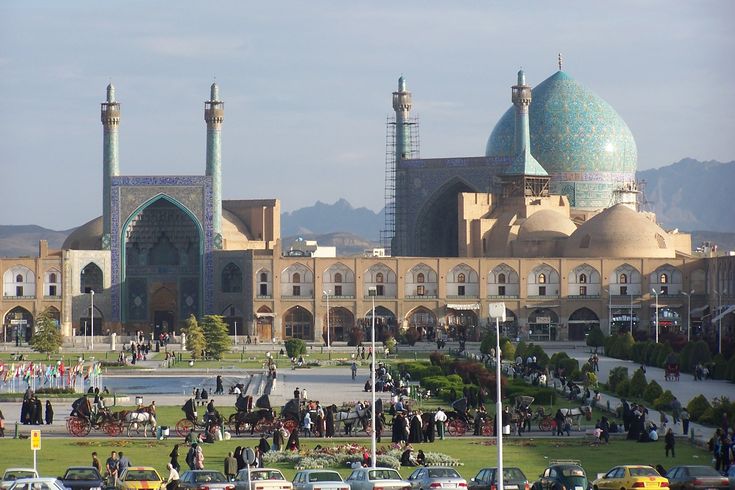
Isfahan Province, located in central Iran, is renowned for its rich cultural heritage, stunning architecture, and historical significance. The province’s capital, Isfahan, is celebrated for its beautiful Islamic architecture, including the grand Naqsh-e Jahan Square and its surrounding monuments.
Isfahan is also known for its picturesque bridges over the Zayandeh River, vibrant bazaars, and traditional Persian gardens. The province’s historical sites, such as the ancient Jameh Mosque and the elegant Chehel Sotoun Palace, highlight its artistic and architectural achievements. Beyond the city, Isfahan Province offers scenic beauty and traditional villages, making it a treasure trove of Persian history and culture.
Naqsh-e Jahan Square, also known as Imam Square, is one of the most iconic and grand squares in the world, located in Isfahan, Iran. Designed in the early 17th century by Shah Abbas I, the square is a masterpiece of Persian architecture and urban planning. Surrounded by majestic structures, including the Shah Mosque, Sheikh Lotfollah Mosque, and Ali Qapu Palace, it is renowned for its symmetrical layout and stunning tilework.
The square, a UNESCO World Heritage Site, is a vibrant hub of cultural and historical significance, reflecting the height of Safavid era art and architecture. Its expansive size, intricate mosaics, and elegant fountains make it a central attraction for visitors, offering a glimpse into Iran’s rich heritage and artistic prowess.
Best months to visit in Isfahan
Isfahan are April to June and September to November.
Spring (April to June): The weather is pleasantly mild and ideal for exploring the square and its surrounding attractions. Spring brings blooming flowers and a lively atmosphere to the area.
Autumn (September to November): Temperatures are comfortable and the weather is generally clear, making it a great time to enjoy outdoor sightseeing without the summer heat.
Open Days And Timing of Isfahan
The opening times for the main attractions around the square, such as the Shah Mosque, Sheikh Lotfollah Mosque, and Ali Qapu Palace, typically follow these hours:
- Shah Mosque (Imam Mosque): 8:00 AM to 7:00 PM
- Sheikh Lotfollah Mosque: 8:00 AM to 6:00 PM
- Ali Qapu Palace: 8:00 AM to 6:00 PM
Ticket of Isfahan
Access to Naqsh-e Jahan Square (Imam Square) itself is free of charge, as it is a public space.
- Shah Mosque (Imam Mosque): Requires an entrance ticket.
- Sheikh Lotfollah Mosque: Requires an entrance ticket.
- Ali Qapu Palace: Requires an entrance ticket.
Famous places of Iran
1. Chehrabad
- Distance: About 20 km southeast of Isfahan
- Highlights: Known for its traditional Persian gardens and historical architecture. It’s a great spot for a tranquil day trip.
2. Kashan
- Distance: Approximately 220 km south of Isfahan
- Highlights: Famous for its historic houses like the Tabatabai House, the Fin Garden, and its traditional bazaar. It’s a charming city with beautiful Persian architecture and gardens.
3. Maranjab Desert
- Distance: Around 100 km northeast of Isfahan
- Highlights: A vast desert area known for its stunning sand dunes, historical caravanserais, and unique desert landscapes. Perfect for a desert adventure and stargazing.
4. Natanz
- Distance: About 100 km east of Isfahan
- Highlights: Home to the beautiful Jameh Mosque of Natanz and the historical village of Abyaneh nearby. It’s an excellent destination for exploring traditional Iranian architecture and culture.
5. Ardestan
- Distance: Around 120 km southwest of Isfahan
- Highlights: Known for its historical sites, including the Jameh Mosque of Ardestan and traditional Persian architecture. It offers a quieter alternative to the bustling city of Isfahan.
6. Zayandeh Rud River
- Distance: Runs through Isfahan and its surroundings
- Highlights: The river is a central feature of Isfahan’s landscape, with scenic spots along its banks and several beautiful bridges. Ideal for a relaxing stroll or picnic.
7. Isfahan Province Villages
- Distance: Varies, but many are within a 50-100 km radius of Isfahan
- Highlights: Traditional Persian villages like Nain and Fereydunshahr offer insight into rural life and traditional architecture, with picturesque landscapes and historical sites.
3.Fars(Iran)
Fars(Iran)
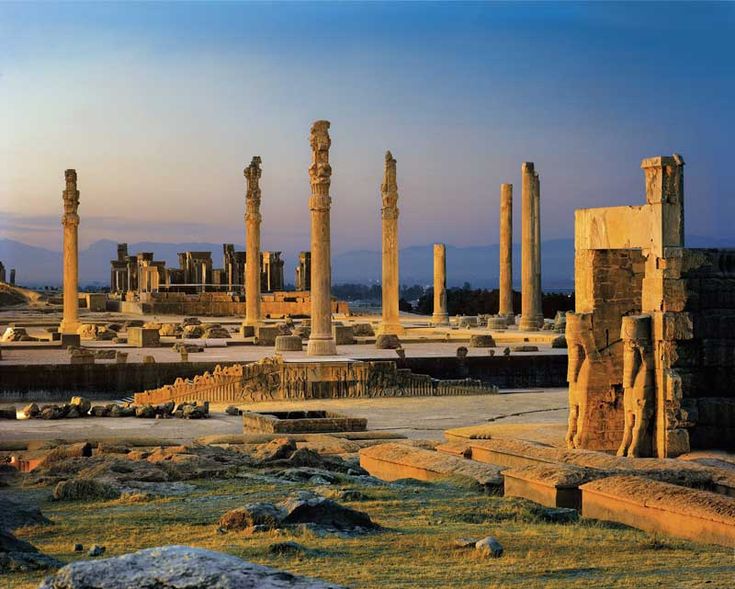
Fars Province, located in southwestern Iran, is renowned for its rich cultural heritage and historical significance. It is home to the ancient ruins of Persepolis and Pasargadae, both UNESCO World Heritage Sites that showcase the grandeur of the Achaemenid Empire. The province’s capital, Shiraz, is celebrated for its beautiful gardens, historic architecture, and vibrant literary culture, being the home of famous Persian poets like Hafez and Saadi. Fars Province also offers picturesque landscapes, from lush gardens to ancient ruins, reflecting its historical importance and cultural richness.
Persepolis, located in Fars Province, Iran, is an ancient ceremonial capital of the Achaemenid Empire, founded by Darius I in the 6th century BCE. As a UNESCO World Heritage Site, it is renowned for its grand architecture, including monumental gateways, massive columns, and intricately carved bas-reliefs depicting scenes of royal ceremonies and tributes from various nations. The site reflects the grandeur of Persian imperial power and is a testament to the artistic and architectural achievements of ancient Persia. Persepolis was partially destroyed by Alexander the Great in 330 BCE, but its impressive ruins continue to captivate visitors and historians alike.
Best months to visit in Fars
The bTest months to visit Persepolis are April to June and September to November.
Spring (April to June): The weather is mild and pleasant, making it ideal for exploring the ancient ruins without the intense heat of summer. The surrounding landscapes are also lush and green during this time.
Autumn (September to November): Temperatures are comfortable, and the weather is generally clear, providing a great experience for sightseeing. This period avoids the peak summer heat and the potential winter chill.
Open Days And Timing of Fars
Persepolis is open to visitors every day of the week, including weekends and public holidays. The typical opening hours are:
- Summer (April to September): 8:00 AM to 7:00 PM
- Winter (October to March): 8:00 AM to 5:00 PM
Ticket of Fars
Ticket Price: Approximately 150,000 to 300,000 IRR (Iranian Rials) for international visitors. Prices for Iranian citizens are typically lower.
Famous places of Iran
1. Shiraz
- Distance: Approximately 60 km from Persepolis
- Highlights: Known for its beautiful gardens, historic mosques, and vibrant bazaars. Key sites include the Nasir al-Mulk Mosque (Pink Mosque), the Tomb of Hafez, and the Vakil Bazaar.
2. Pasargadae
- Distance: About 130 km northeast of Shiraz
- Highlights: An ancient city with the tomb of Cyrus the Great and ruins from the early Persian Empire, showcasing the historical significance of the Achaemenid dynasty.
3. Bishapur
- Distance: Around 85 km southeast of Shiraz
- Highlights: An ancient city founded by Shapur I of the Sassanian Empire, known for its rock reliefs, ruins, and the unique architectural features of its urban center.
4. Qalat Village
- Distance: About 40 km northwest of Shiraz
- Highlights: A traditional village with historical architecture, scenic views, and a peaceful atmosphere, offering insight into rural Iranian life.
5. Kharanaq Village
- Distance: Approximately 120 km west of Shiraz
- Highlights: An ancient village with adobe houses, historical ruins, and picturesque desert landscapes, providing a glimpse into traditional Iranian architecture and desert life.
6. Eram Garden
- Distance: In Shiraz
- Highlights: A historic Persian garden known for its lush greenery, beautiful flowers, and traditional design, reflecting the classic Persian garden aesthetic.
7. Rudkhan Castle
- Distance: About 100 km southwest of Shiraz
- Highlights: A historical castle with panoramic views of the surrounding landscapes, showcasing medieval military architecture.
4.Yazd (Iran)
Yazd City(Iran)
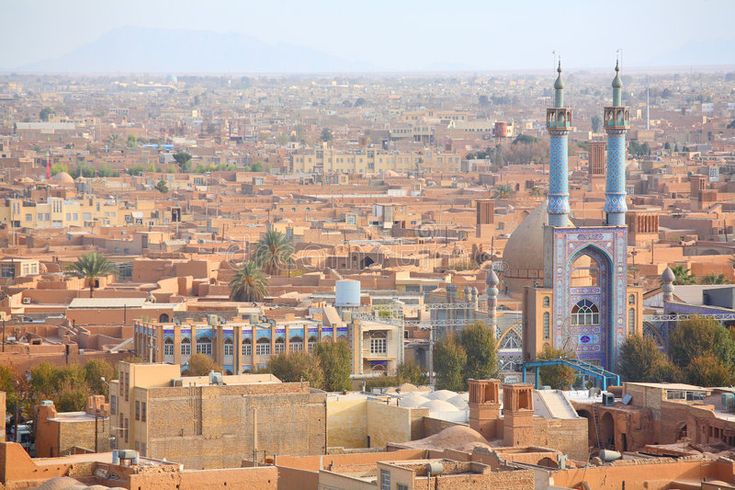
Yazd City, the capital of Yazd Province, is a remarkable example of traditional Persian desert architecture and culture. Renowned for its well-preserved historical buildings, Yazd features narrow winding streets, ancient wind towers (badgirs), and adobe houses designed to withstand the harsh desert climate. The city is also known for its vibrant bazaars, stunning Persian gardens, and important Zoroastrian sites, including the Towers of Silence and the Fire Temple. Yazd’s unique urban layout and rich cultural heritage make it a UNESCO World Heritage Site and a fascinating destination for exploring Iran’s history and architectural ingenuity.
Best months to visit in Yazd City
The best months to visit Yazd City are April to June and September to November.
Spring (April to June): During these months, the weather is mild and pleasant, making it ideal for exploring Yazd’s historical sites and traditional architecture. The temperatures are comfortable, and the city’s gardens and surroundings are in full bloom.
Autumn (September to November): Temperatures are also moderate, avoiding the extreme heat of summer and the chill of winter. It’s a great time to experience the city’s desert landscape and cultural attractions.
Open days and timing of Yazd City
Yazd City’s key attractions are generally open to visitors every day of the week, but their opening hours can vary. Here’s a general guideline for the major sites:
Jameh Mosque of Yazd: Typically open from 8:00 AM to 7:00 PM. Some mosques might close during prayer times, so it’s good to check locally.
Dowlat Abad Garden: Usually open from 8:00 AM to 6:00 PM. During the peak summer months, the garden might close earlier due to heat.
Zoroastrian Fire Temple: Generally open from 9:00 AM to 5:00 PM. It’s closed during religious ceremonies and some festivals.
Towers of Silence (Dakhma): Typically accessible from 8:00 AM to 5:00 PM. It’s a good idea to check in advance for any specific visiting restrictions.
Yazd Water Museum: Usually open from 9:00 AM to 6:00 PM, with some variations depending on the season.
Ticket of Yazd City
Tickets for major attractions in Yazd City are generally affordable. Here’s an overview of the ticketing for some key sites:
Jameh Mosque of Yazd: Entrance is typically free, but donations are often encouraged.
Dowlat Abad Garden: Entry usually requires a ticket, with prices generally around 100,000 IRR (Iranian Rials) for international visitors.
Zoroastrian Fire Temple: There is usually a small fee to enter, around 100,000 IRR to 200,000 IRR for international visitors.
Towers of Silence (Dakhma): Entry typically requires a ticket, priced around 100,000 IRR to 200,000 IRR for international visitors.
Yazd Water Museum: Entrance fees are generally about 100,000 IRR to 200,000 IRR.
Famous places of Iran
1. Kharanagh Village
- Distance: About 90 km northwest of Yazd
- Highlights: An ancient village with traditional adobe architecture, historical ruins, and stunning desert landscapes. It offers a glimpse into rural life and traditional Persian architecture.
2. Chak Chak (Pir-e Sabz)
- Distance: Approximately 60 km north of Yazd
- Highlights: A sacred Zoroastrian pilgrimage site built into a cliffside, known for its unique setting and religious significance. It features a temple and offers beautiful views of the surrounding mountains.
3. Mehriz
- Distance: Around 40 km south of Yazd
- Highlights: A town with historical sites and traditional Persian gardens, including the historic Mehriz Mosque and charming old streets. It’s known for its peaceful atmosphere and cultural heritage.
4. Meybod
- Distance: About 80 km east of Yazd
- Highlights: Known for its historic caravanserai, ancient castle, and traditional pottery. Meybod is an excellent place to explore Persian architectural heritage and local crafts.
5. Nain
- Distance: Approximately 150 km west of Yazd
- Highlights: A historic town known for its ancient Jameh Mosque, traditional Persian houses, and beautiful desert surroundings. It’s a great destination for experiencing traditional Iranian culture and architecture.
6. Saryazd Castle
- Distance: About 60 km southwest of Yazd
- Highlights: A well-preserved historical castle offering panoramic views of the surrounding desert and insight into medieval Iranian military architecture.
7. Taft Village
- Distance: Around 40 km northwest of Yazd
- Highlights: A picturesque village with beautiful gardens, historical sites, and traditional architecture. It’s an ideal spot for experiencing rural Persian culture and landscapes.
5.Hormozgan
Hormozgan Island(Iran)
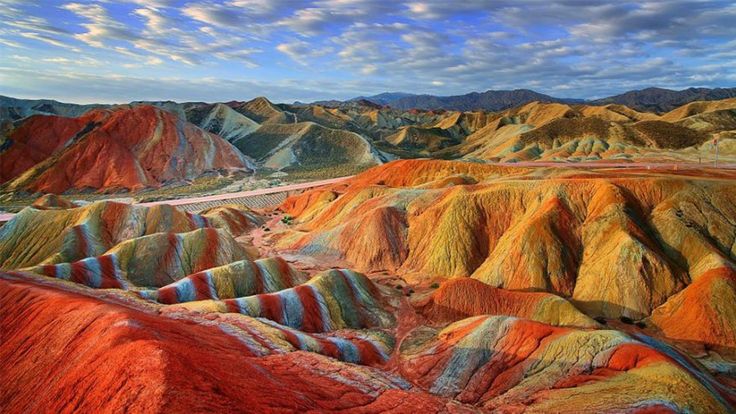
Hormuz Island, located in the Persian Gulf, is renowned for its striking natural beauty and vibrant geological features. Famous for its colorful soil and rock formations, including the Red Beach and Rainbow Valley, the island presents a surreal landscape of red, orange, and purple hues. Hormuz Island is also home to historical sites such as the Portuguese Castle, which dates back to the 16th century. Its unique geography and rich history make it a fascinating destination for nature enthusiasts and history buffs alike. The island’s diverse colors and geological formations offer a visually stunning experience, contrasting sharply with the blue waters of the Gulf.
Best months to visit in Hormuz Island
The best months to visit Hormuz Island are October to April.
Autumn (October to November): Temperatures start to cool down, making it more comfortable for exploring the island and its attractions. The weather is generally pleasant, and you can enjoy outdoor activities without the intense heat.
Winter (December to February): This period offers the most comfortable temperatures for visiting Hormuz Island, with mild, pleasant weather perfect for sightseeing and outdoor adventures.
Early Spring (March to April): The weather remains mild and enjoyable, and the temperatures are still comfortable before the heat of the summer sets in.
Open Days And Timing of Hormuz Island
Portuguese Castle: Generally open during daylight hours, usually from around 8:00 AM to 6:00 PM. It’s advisable to check locally for exact times.
Local Tours and Activities: Tour operators might have set schedules and timings. It’s best to confirm with local providers or guides.
Ticket of Hormuz Island
Access to Hormuz Island itself is generally free, as it is a public location. However, certain attractions and activities on the island may have entrance fees or costs associated with them:
Portuguese Castle: There is usually a small entrance fee to visit the castle. Prices are typically around 100,000 to 200,000 IRR (Iranian Rials) for international visitors.
Local Tours and Activities: Prices for guided tours or specific activities (such as boat trips or special excursions) can vary. It’s best to inquire locally about rates and availability.
Famous places of Iran
1. Kish Island
- Distance: Approximately 80 km northwest of Hormuz Island
- Highlights: A popular resort island known for its beautiful beaches, luxury resorts, and recreational activities. Key sites include the Kish Dolphin Park, the Greek Shipwreck, and the Coral Beach.
2. Qeshm Island
- Distance: About 90 km west of Hormuz Island
- Highlights: The largest island in the Persian Gulf, known for its diverse natural attractions such as the Hara Forests (mangroves), Valley of Stars (unique geological formations), and the Qeshm Island Geopark.
3. Bandar Abbas
- Distance: Around 75 km west of Hormuz Island (mainland)
- Highlights: The provincial capital with historical sites including the Portuguese Castle, the Bandar Abbas Bazaar, and the scenic coastal views.
4. Hengam Island
- Distance: Approximately 50 km southwest of Hormuz Island
- Highlights: Known for its beautiful beaches, clear waters, and traditional fishing villages. It offers opportunities for eco-tourism and exploring local culture.
5. Lark Island
- Distance: About 100 km southwest of Hormuz Island
- Highlights: Noted for its stunning coral reefs and marine life, making it a great spot for snorkeling and diving.
6. Jazireh Island (Jazireh-ye Khar)
- Distance: Approximately 130 km southwest of Hormuz Island
- Highlights: Known for its unique geological features and traditional local culture, offering a more off-the-beaten-path experience.
7. Rikob Island
- Distance: About 70 km southeast of Hormuz Island
- Highlights: A less-visited island with natural beauty and tranquility, ideal for a peaceful escape.
